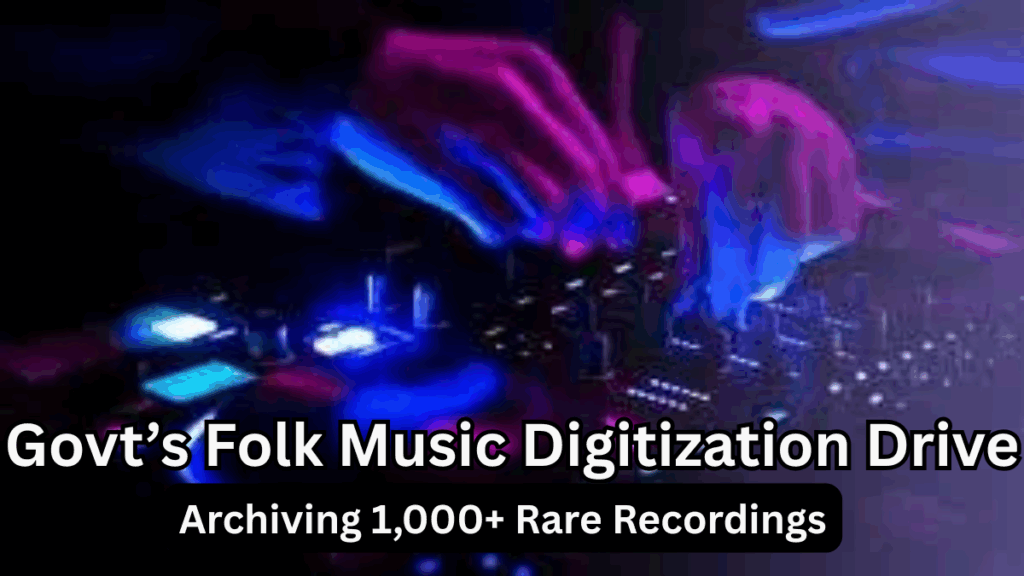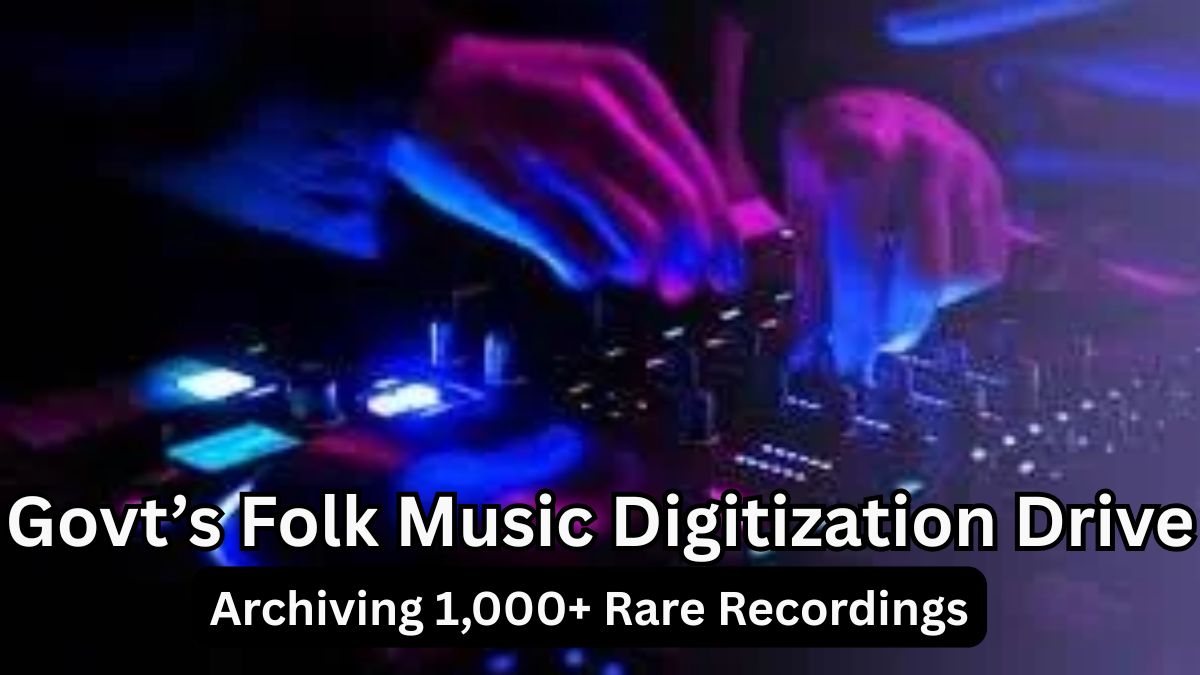India’s rich musical heritage is taking a giant leap into the digital age. In 2025, the government has launched an ambitious initiative to preserve and promote traditional music through folk music digitization 2025. This drive aims to archive over 1,000 rare recordings from across the country, ensuring that generations to come can experience India’s diverse soundscape.

Why the Folk Music Digitization 2025 Drive Matters
India is home to thousands of traditional music forms, spanning from classical ragas to regional folk songs and tribal rhythms. Many of these recordings are at risk of being lost due to aging tapes and vinyl records. The government’s initiative ensures that:
-
Cultural preservation – Safeguarding rare folk and tribal songs for future generations.
-
Wider accessibility – Making rare recordings available for researchers, students, and enthusiasts.
-
Global recognition – Showcasing India’s musical diversity to the world.
Key Highlights of the Drive
-
Recordings to be digitized: 1,000+ rare folk and tribal music tracks.
-
Collaborating bodies: Ministry of Culture, National Archives, and state music academies.
-
Focus regions: All states and union territories, with special emphasis on tribal belts.
-
Digital repository: Recordings will be available in a secure online archive for research and cultural programs.
State-Wise Tribal Music Archive India Efforts
| State/Region | No. of Recordings | Notable Contributions |
|---|---|---|
| Rajasthan | 120 | Rajasthani folk songs, Bhopa performances |
| Chhattisgarh | 100 | Tribal Bhatra and Pandwani music |
| Odisha | 90 | Tribal Odia folk songs and rituals |
| Jharkhand | 80 | Santhali and Munda tribal music |
| West Bengal | 75 | Baul and tribal rhythms |
| North-East States | 200 | Folk tunes of Nagaland, Assam, and Manipur |
| Madhya Pradesh | 150 | Gond tribal and Bhil songs |
| Maharashtra | 75 | Powada and Lavani traditions |
| Other States | 110 | Regional folk and tribal collections |
This systematic approach ensures that tribal music archive India gains both national and international visibility while protecting endangered music forms.
Benefits for the Public and Researchers
-
Digital libraries: Free access to archived music for study and performance.
-
Preservation of heritage: Reduces the risk of losing invaluable cultural resources.
-
Educational resources: Schools, colleges, and universities can integrate recordings into curricula.
-
Cultural tourism: Promotes awareness about India’s folk music traditions, boosting tourism initiatives.
How the Digitization Process Works
-
Collection – Original recordings sourced from states, community elders, and music academies.
-
Restoration – Damaged or degraded tapes and records are digitally enhanced.
-
Digitization – High-quality digital copies created and indexed.
-
Archiving – Stored in secure digital repositories with metadata for easy retrieval.
FAQs
Q1: Who can access the digitized folk music recordings?
A: The archived recordings will be available to researchers, students, cultural organizations, and the general public through authorized online portals.
Q2: How is this different from previous music preservation efforts?
A: Unlike past initiatives, folk music digitization 2025 focuses specifically on rare and endangered tribal music, ensuring both high-quality digital preservation and public accessibility.
Q3: Can musicians contribute recordings to the archive?
A: Yes, local musicians and community elders are encouraged to submit rare or traditional music recordings to be included in the tribal music archive India initiative.
Q4: When will the recordings be available online?
A: The government aims to make the first batch of digitized recordings accessible by the end of 2025, with regular updates to expand the repository.
Click here to learn more
